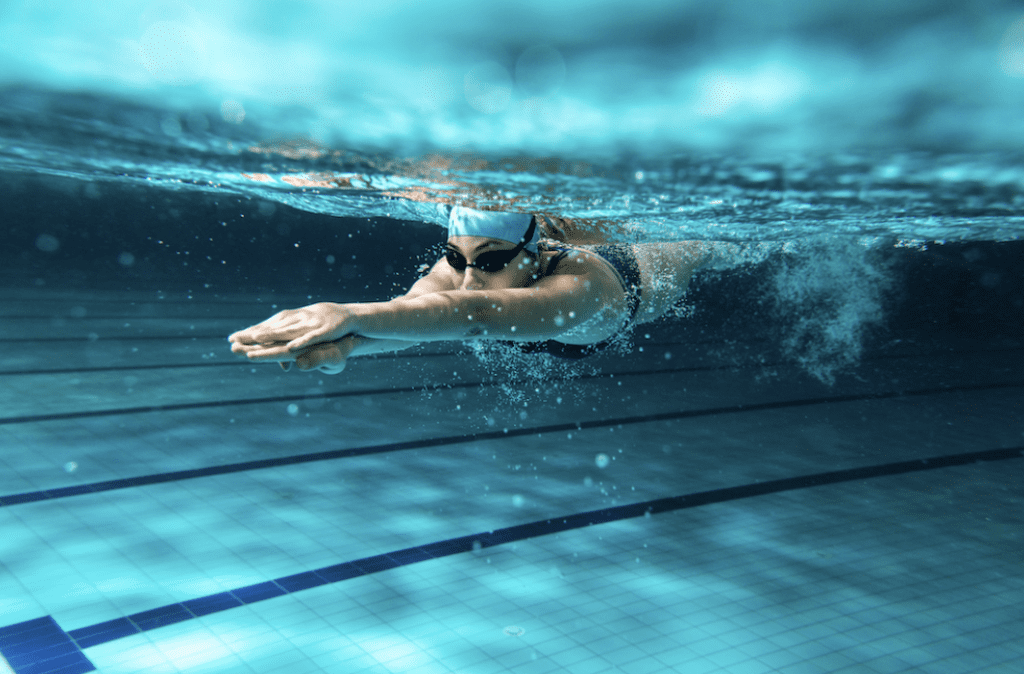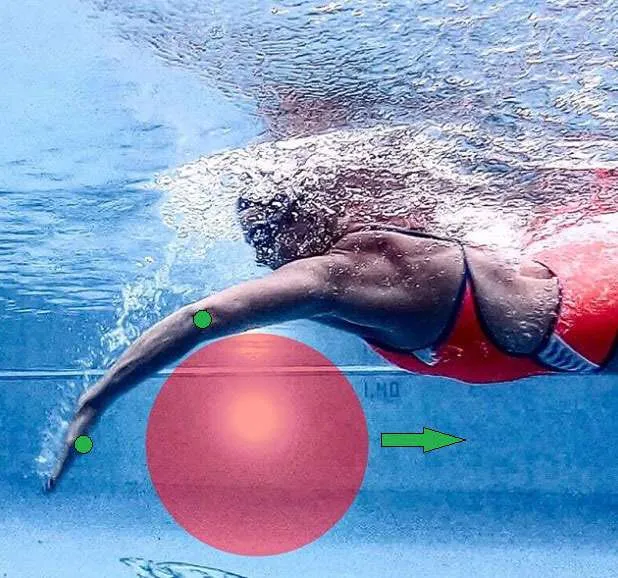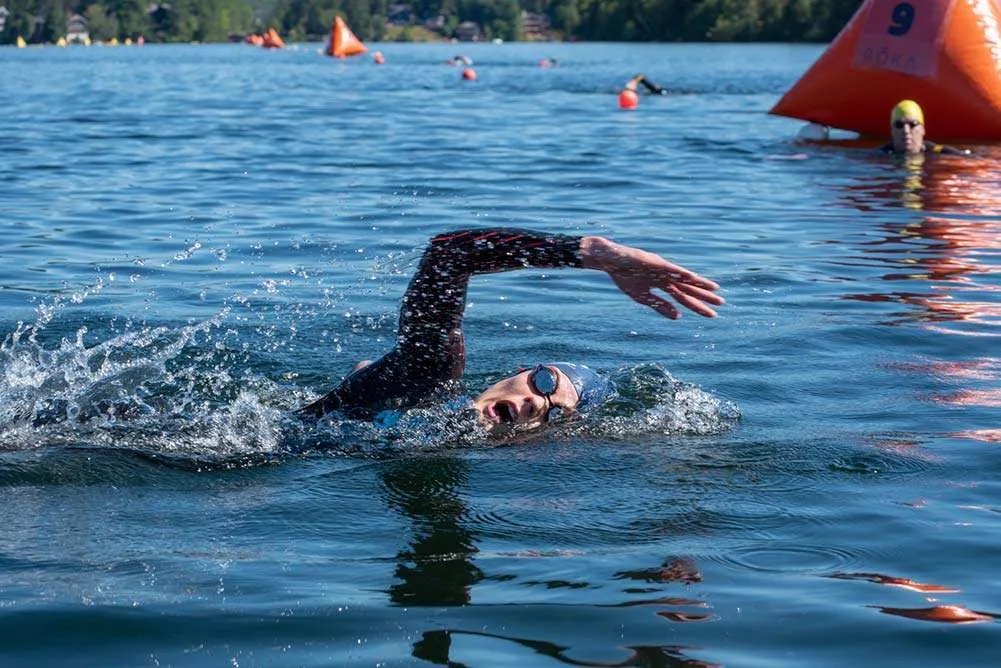
Freestyle swimming is among the world’s most widely used and well-known swimming strokes. It is a competitive stroke used at various distances in swimming competitions. The freestyle stroke, sometimes called the front crawl, is characterized by alternating arm movements and a flutter kick. While freestyle swimming may seem simple, it is a complex and technical stroke that requires practice to master the skills.
Body Position
Body position is one of the most important aspects of the freestyle swimming technique. A good body position is crucial for reducing drag and increasing efficiency in the water. When swimming freestyle, your body should be straight from your head to your toes—think “long and taut.” Your head should be aligned with your body, and your hips and legs should be near the water’s surface.
Keep your head neutral, face down, and neck relaxed to maintain a good body position in the water. Avoid lifting your head to breathe unless you are in open water, as this will disrupt your body position and slow you down. Focus on keeping a long, streamlined bodyline in the water, with a slight tilt from side to side as you swim.
Arm Movement
Arm movement is another important component of the stroke in freestyle swimming. It consists of four main phases: Entry, the Catch, the Pull, and the Recovery. In the entry phase, your arm reaches forward and enters the water at shoulder width in front of your head. Your hand should enter the water with your thumb down, fingertips first, and as you reach your arm forward, shift your shoulder slightly ahead so the arm extends in front of you.
Once your hand and arm enter the water, imagine reaching over a barrel or physioball until your “paddle blade”, (a.k.a. fingertips to elbow) is vertical and perpendicular to the water’s surface. If your elbow had an eyeball on it, that eye would be looking out to the side. This position is the Catch.

After the Catch, your stroke is ready to begin the Pull phase, where you pull your “paddle blade” back through the water. Keep your elbow high and engage your lats and core muscles to generate power and propulsion. The Pull should be strong and fluid, with a high elbow position and a strong push through the water.
After the Pull phase, you begin the Recovery phase, where your arm exits the water by the hips and returns to the front. Your arm should recover over the water in a relaxed and controlled motion, with your hand entering the water in front of your head to begin the next stroke.
NOTE: if you want to learn more about the complete Freestyle stroke, be sure to check out the five lessons for a faster freestyle in the Vasa blog, starting with lesson 1:
Breathing
Breathing is a key element of the freestyle swimming technique, as it allows you to maintain a steady rhythm and oxygenate your muscles during the swim. When breathing in freestyle, it is important to exhale continuously while your face is in the water and to inhale quickly and efficiently when you turn your head to breathe.
To breathe in freestyle, turn your head to the side as your arm recovers. Keep one goggle in the water and one goggle out of the water, and take a quick breath as you turn your head to the side. Try to keep your body position as streamlined as possible while turning your head to breathe. Avoid lifting your head out of the water unless you are sighting in open water.
Insert photo here:

Practice breathing on both sides to develop bilateral breathing, which can help you maintain balance and symmetry in your stroke. Remember to breathe rhythmically and consistently throughout your swim to stay relaxed and efficient in the water.
Kick
The kick is the final major part of the freestyle swimming technique, and it plays a crucial role in generating propulsion and power in the water. The freestyle kick is a flutter kick, where you kick your legs up and down continuously. Your legs should be extended, relaxed, and flexible, with your toes pointed and your ankles flexible.
Your kick should originate from your hips, with a slight knee bend and a quick and powerful motion. Your kick should be consistent and steady, with both legs kicking simultaneously for maximum propulsion. Focus on using your core and hip muscles to drive the kick and keep your lower body in alignment with your upper body.
Incorporating drills and exercises into your training routine can help you improve your kick and develop leg strength and endurance. Practice kicking drills with a kickboard or fins to isolate and strengthen your kick, and incorporate kick sets into your workouts to improve your leg strength and stamina.
Shop Vasa Products Today!
The freestyle swimming technique is a complex and technical stroke that requires skill, practice, and conditioning to master. By focusing on the four major parts of the freestyle stroke—body position, arm movement, breathing, and kick—you can improve your technique and become a more efficient and faster swimmer.
Remember to maintain a straight and streamlined body position in the water, focus on the three phases of the arm movement (catch, pull, recovery), practice rhythmic and efficient breathing, and develop a strong and steady kick. Incorporating these key components into your training routine will help you swim faster, more efficiently, and more easily in the water.
If you want to improve your freestyle swimming technique and take your swimming to the next level, consider incorporating Vasa products into your training routine. Vasa products are designed to provide a lifetime of reliable and functional service, empowering athletes to get stronger, better, and faster in sports, fitness, and injury rehab. With our motto of “Quality Costs Less,” you can trust that you are getting the best performance and durability with Vasa products. Contact us to learn more and take your swimming to the next level with Vasa.